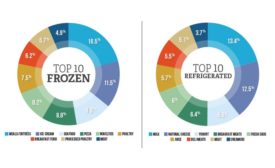Home » Keywords: » marketplace disruption
Items Tagged with 'marketplace disruption'
ARTICLES
As the House of Representatives is expected to vote to impeach the President, this could very well set off a chain of events.
Read More
Report unveils flavors, ingredients, culinary techniques set to disrupt food, beverage in 2020
For example, foodprints (the environmental impact of food) are swaying consumer purchases.
October 29, 2019
Report reveals major disruption in food, agriculture in next decade
The report details the way different parts of the cow (meat, milk, collagen and leather) and the markets they serve will be disrupted separately and concurrently by different technologies and business-model innovations.
September 17, 2019
2019 Foodservice Distributor of the Year: How US Foods became the ultimate partner in food
Discover how the Rosemont, Ill.-based company’s continued efforts in developing better-for-you recipes, implementing sustainable initiatives and exercising smart distribution deem it this year’s Foodservice Distributor of the Year.
September 10, 2019
The rise of women in supply chain & logistics
The recent infiltration of women continues to disrupt the culture of the marketplace, translating to diversity, inclusion and a different way of doing business.
July 12, 2019
State of the Industry Report 2019: Marketplace disruption—The future of food & beverage
Check out the refrigerated and frozen food industry’s most extensive annual report, which covers everything from trends and analysis to product performance and packaging initiatives.
July 11, 2019
Elevate your expertise in refrigerated and frozen foods with unparalleled insights and connections.
Get the latest industry updates tailored your way.
JOIN TODAY!Copyright ©2025. All Rights Reserved BNP Media.
Design, CMS, Hosting & Web Development :: ePublishing










